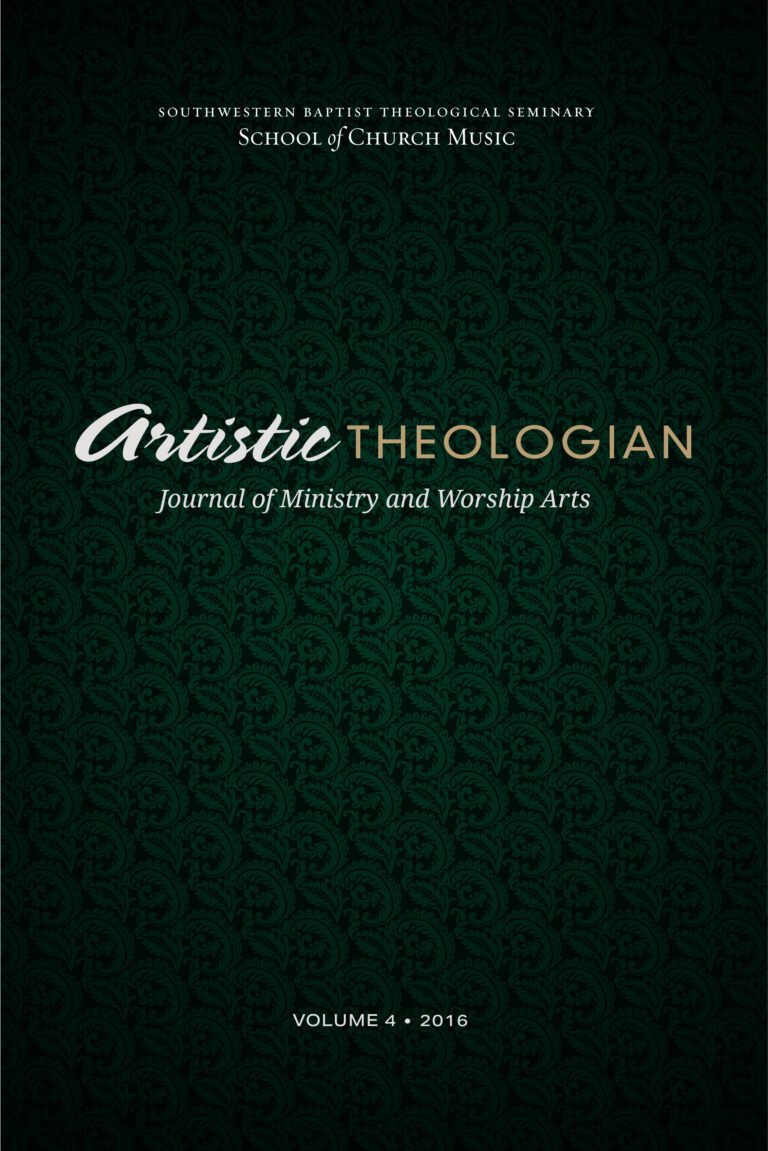
“Thus Says the Lord”: Biblical Worship in Contemporary Practice
Artistic Theologian
Volume 4, Summer 2016
Editor-in-Chief: Scott Aniol
God’s revelation is the basis and foundation of everything in Christian life and ministry. God’s inspired Word is the ultimate standard for what Christians believe, how they live their lives, and especially the manner in which they approach God in worship. Since worship is to God, for God, and about God, God alone has the prerogative to determine how he will be worshiped.
This conviction, characteristic especially of children of the Reformation, is based on several key biblical truths: First, Scripture itself teaches that it is sufficient and uniquely authoritative (2 Tim 3:16–17). If the Word of God is sufficient to perfectly equip Christians for every good work, then surely the Bible is sufficient for contemporary worship.
Second, Scripture is filled with examples of God rejecting worship that is not explicitly founded upon his own revealed will. Whether it was the Hebrew people mimicking the pagan nations in the way they approached God (Exod 32:1–10), sons of the High Priest offering “unauthorized fire” to the Lord (Lev 10:1–3), or religious leaders adding extra-biblical regulations to worship (Matt 15:8–9), God always condemns those worship practices that he has not explicitly prescribed.
Third, the biblical emphasis on liberty of conscience limits the authority of church leaders to introduce in corporate worship only what God’s Word allows. The New Testament is clear that when it comes to spiritual matters, since “each one should be fully convinced in his own mind,” only that which God has clearly prescribed for worship may bind individual consciences in a corporate worship setting (Rom 14:5–6).
It is for these reasons, especially the final one, that dependence upon the authority and sufficiency of the Word of God in matters of worship is actually quite liberating. Far from being unnecessarily restrictive, depending on the Word of God to regulate Christian worship gives confidence to church leaders and congregants alike that how they are approaching God in worship is both pleasing to him and ultimately what will draw them progressively into a deeper relationship with God.
This fourth volume of Artistic Theologian is not a themed issue, but providentially every article relates to this matter of the sufficiency and authority of God’s Word in worship. The first two articles address God’s Word in corporate worship. T. David Gordon provides commentary on the use of psalms in corporate worship, arguing that when Christians sing psalms, they should not sing only parts of a psalm but should consider the full literary and theological context. Paige Patterson diagnoses the enigmatic disappearance of Scripture in the corporate worship of evangelicals today, offering suggestions for making sure to “give attention to the public reading of Scripture” (1 Tim 4:13).
Next, Matthew Ward explores how early English Baptists’ commitment to pure, biblically regulated worship impacted their debates over whom they would welcome into church membership. The final articles exegete two passages of Scripture, drawing conclusions from them for contemporary practice. Scott Connell studies the transfiguration of Christ and its implications for worship. Steven Winiarski investigates the original meaning and intent of Christ’s exhortation against “vain repetition” in Matthew 6 and questions how it should be applied to singing in worship today.
This issue of Artistic Theologian serves as a model for how Christians should approach matters related to corporate worship: rooted and grounded in the Word of God. Worshipers of God should know God’s revelation, read it regularly both individually and corporately, understand it in its original context, and actively apply it to every aspect of their worship practice.
We hope that you will benefit from this issue, and we welcome both article and book review submissions for our next volume, scheduled for publication in April of 2017. The deadline for submissions is October 1, 2016.





